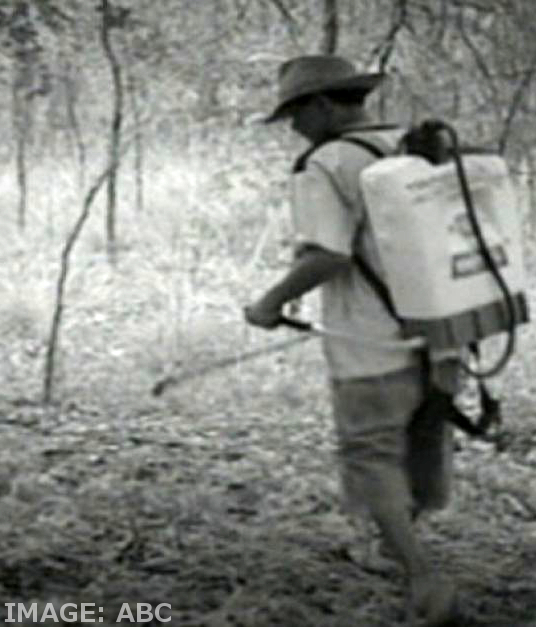More calls for 245-T compensation in WA
 More authorities are joining the push for a fresh look into long-running claims of herbicide poisoning of government workers.
More authorities are joining the push for a fresh look into long-running claims of herbicide poisoning of government workers.
Over 300, mostly Aboriginal, WA Government workers were employed to spray herbicide containing the now banned substance 245T on weeds across Northern WA in the nineteen-seventies and ‘eighties.
The Agricultural Protection Board workers were not given adequate protection equipment and clothing, allowing them to be exposed to the highly hazardous chemical.
A government inquiry in 2003 called for at least 27 workers who were still alive to be compensated, but in the years since, only 8 workers have received compensation.
In a recent interview for the ABC, a doctor involved in the 2003 government inquiry said he thought the workers and their families had never been given enough attention.
“It has never been resolved and the Government’s response has been simply to look at the whole problem statistically, and when the statistics were not there they really washed their hands of it,” Dr Andrew Harper said.
“We know that these chemicals have an effect on DNA.
“What needs to be done now in the light of intergenerational effects, is perhaps they [the Government] should go back to those first two reviews.”
This, he said, would include creating a fund for the victims and their families.
245-T is one of the key components in the infamous defoliant substance known as Agent Orange.
In the US, thousands of Air Force veterans have only recently been awarded compensation for decades-old exposure to Agent Orange.
Recent rulings deemed that Air Force and Air Force Reservists who served in particular C-123 aircraft were likely enough to have been exposed to the chemical that they can claim compensation for ill-health conditions related to Agent Orange.
In Australia, the battle continues.







 Print
Print